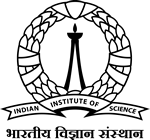
funded by Department of Biotechnology, Government of India
The instruction manual for our life, the human genome, comprises the basic structural unit of DNA, represented by four letters A, C, G, and T stretched over three billion such letters. About 0.1 % of the entire sequence differs between any two individuals on average, thus creating variations in the genetic code among individuals. These genetic variations among individuals are crucial for understanding our disease predispositions and rare inherited disorders. They determine our response to drugs and help track migration and evolutionary patterns of population groups.
Populations across the world differ in their genetic makeup and environmental influences. Therefore, it is important to examine the risk factors for complex genetic diseases and rare genetic variations contributing to specific disorders in population-specific studies.
The Indian population of 1.3 billion consists of >4600 population groups, and several thousand of them are endogamous. These factors have contributed to the genetic diversity of the current-day Indian population. Thus, the Indian population harbors distinct variations and often many disease-causing mutations are amplified within some of these groups. Therefore, findings from population-based or disease-based human genetics research from other populations of the world cannot be extrapolated to Indians. The GenomeIndia endeavor is complex, yet much needed to understand our nation’s genetic makeup.
This is a national project funded by the Department of Biotechnology, Government of India, and spearheaded by CBR. The project aims to identify genetic variations through whole genome sequencing of 10,000 representative individuals across India in the first phase of the study. The 20 national institutes across the country that form the working consortium are represented below.

The specific aims of the project are:
- Create an exhaustive catalog of genetic variations (common, low frequency, rare, single nucleotide polymorphisms or SNPs and structural variations) in Indians.
- Create a reference haplotype structure for Indians. This reference panel can be used for imputing missing genetic variation in future GWA studies.
- Design genome-wide arrays for research and diagnostics at an affordable cost.
- Establish a biobank for DNA and plasma collected for future use in research.
For this purpose, individuals across India are enrolled in the study based on the ethnicity of the population groups, geographical location, and linguistic preferences. The study individuals from diverse socioeconomic backgrounds undergo a plethora of anthropometric tests, blood biochemical analyses informative of complex conditions (such as diabetes, dyslipidemia, kidney function, and liver function). Whole genome sequencing is executed in four institutes in the country, including CBR.
Preliminary investigations have revealed the distinct genetic diversity in India.

Distribution of the genotypes from GenomeIndia samples shows captured genetic diversity in Indian population.

The results from this project would be a valuable national resource for the country. They will collectively facilitate future large-scale human genetic studies for researchers across India. The database of harmonized genetic variants will empower worldwide variant interpretation efforts and are likely to be the foundational resource for next-generation basic and clinical research in India.
GenomeIndia could be the initial steps of precision medicine in India:
- Is based on the genetic makeup and predicted disease susceptibility of the individual, based on age, gender, ethnicity.
- Takes into account the environment, lifestyle, and family health history.
- May yield tailored information about how to lead a healthier lifestyle.
- May lead to reduced health care expenses.
As this is a potential alternative to the ‘one size fits all’ approach, it is expected to be transformational for the healthcare scenario of the country in the long run.
Last Updated on September 19, 2023

